Caliper Seals |Pistons
- Porsche 992.1 Carrera 2 3.0L 2019-24
- Porsche 992.1 Carrera 4 3.0L 2019-24
- Porsche 992.1 Carrera 2 Cabriolet 3.0L 2019-24
- Porsche 992.1 Carrera 4 Cabriolet 3.0L 2019-24
- Porsche 992.1 Carrera 2S / GTS 3.0L 2019-24
- Porsche 992.1 Carrera 4S / GTS 3.0L 2019-24
- Porsche 992.1 Carrera 2S / GTS Cabriolet 3.0L 2019-24
- Porsche 992.1 Carrera 4S / GTS Cabriolet 3.0L 2019-24
- Porsche 992.1 Targa 4 3.0L 2020-24
- Porsche 992.1 Targa 4S / GTS 3.0L 2020-24
- Porsche 992.1 Speedster 4.0L 2019-24
- Porsche 992.1 Turbo 3.8L 2020-24
- Porsche 992.1 Turbo S 3.8L 2020-24
- Porsche 992.1 Turbo Cabriolet 3.8L 2020-24
- Porsche 992.1 Turbo S Cabriolet 3.8L 2020-24
- Porsche 992.1 GT3 4.0L / 992 S/T 4.0L 2021-24
- Porsche 992.1 GT3 RS 4.0L 2022-24
- Porsche 992.1 (911) Sport Classic 3.8L 2023
- Porsche 992.1 (911) Dakar 3.0L 2023-24
- Porsche 992.1 GT3 CUP 4.0L 2021-24
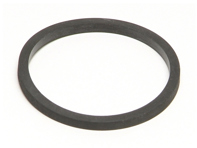

Price is each seal
**Please check the piston size you need as some callipers take two different sizes.
Fits:
Various Models
Price is each seal
Related reference numbers
Related, superseded, cross reference or alternative numbers for comparison.
1055955
The product you are viewing cross references to these numbers
 Shop Securely
Shop Securely
 12 Month Warranty
12 Month Warranty
 Worldwide Delivery
Worldwide Delivery
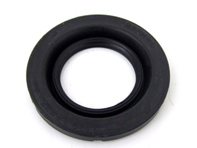

**Please check the piston size you need as some callipers take two different sizes.
Fits:
Various Models
Price is each seal
Related reference numbers
Related, superseded, cross reference or alternative numbers for comparison.
204872
The product you are viewing cross references to these numbers
 Shop Securely
Shop Securely
 12 Month Warranty
12 Month Warranty
 Worldwide Delivery
Worldwide Delivery
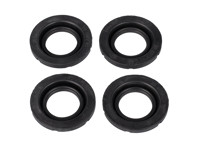

- Porsche 991.2 Carrera 2 3.0L (370 Bhp) 2016-19
- Porsche 991.2 Carrera 2S 3.0L (420 Bhp) 2016-19
- Porsche 991.2 Carrera 4 3.0L (370 Bhp) 2016-19
- Porsche 991.2 Carrera 4S 3.0L (420 Bhp) 2016-19
- Porsche 991.2 Cabriolet 2 3.0L (370 Bhp) 2016-19
- Porsche 991.2 Cabriolet 2S 3.0L (420 Bhp) 2016-19
- Porsche 991.2 Cabriolet 4 3.0L (370 Bhp) 2016-19
- Porsche 991.2 Cabriolet 4S 3.0L (420 Bhp) 2016-19
- Porsche 991.2 Targa 4 3.0L (370 Bhp) 2016-19
- Porsche 991.2 Targa 4S 3.0L (420 Bhp) 2016-19
- Porsche 991.2 Turbo Coupe 3.8L (540 Bhp) 2016-19
- Porsche 991.2 Turbo S Coupe 3.8L (580 Bhp) 2016-19
- Porsche 991.2 Turbo Cabriolet 3.8L (540 Bhp) 2016-19
- Porsche 991.2 Turbo S Cabriolet 3.8L (580 Bhp) 2016-19
- Porsche 992.1 Carrera 2 3.0L 2019-24
- Porsche 992.1 Carrera 4 3.0L 2019-24
- Porsche 992.1 Carrera 2 Cabriolet 3.0L 2019-24
- Porsche 992.1 Carrera 4 Cabriolet 3.0L 2019-24
- Porsche 992.1 Carrera 2S / GTS 3.0L 2019-24
- Porsche 992.1 Carrera 4S / GTS 3.0L 2019-24
- Porsche 992.1 Carrera 2S / GTS Cabriolet 3.0L 2019-24
- Porsche 992.1 Carrera 4S / GTS Cabriolet 3.0L 2019-24
- Porsche 992.1 Targa 4 3.0L 2020-24
- Porsche 992.1 Targa 4S / GTS 3.0L 2020-24
- Porsche 992.1 Speedster 4.0L 2019-24
- Porsche 992.1 Turbo 3.8L 2020-24
- Porsche 992.1 Turbo S 3.8L 2020-24
- Porsche 992.1 Turbo Cabriolet 3.8L 2020-24
- Porsche 992.1 Turbo S Cabriolet 3.8L 2020-24
- Porsche 9YA Cayenne V6 3.0L Petrol 340Hp 2018-23
- Porsche 9YA Cayenne Coupe V6 3.0L Petrol 340Hp 2019-23
- Porsche 9YA Cayenne E-Hybrid V6 3.0L V6 340Hp 2018-23
- Porsche 9YA Cayenne Coupe E-Hybrid V6 3.0L 340Hp 2020-23
- Porsche 9YA Cayenne S V6 2.9L Petrol 440Hp 2018-23
- Porsche 9YA Cayenne Coupe S V6 2.9L Petrol 440Hp 2019-23
- Porsche 9YA Cayenne GTS V8 4.0L Petrol 460Hp 2020-23
- Porsche 9YA Cayenne Coupe GTS V8 4.0L Petrol 460Hp 2021-23
- Porsche 9YA Cayenne Turbo V8 4.0L Petrol 550Hp 2020-23
- Porsche 9YA Cayenne Coupe Turbo V8 4.0L Petrol 550Hp 2019-23
- Porsche 9YA Cayenne Turbo S E-Hybrid V8 4.0L 550Hp 2019-23
- Porsche 9YA Cayenne Coupe Turbo S E-Hybrid V8 4.0L 550Hp 2020-23
- Porsche 9YA Cayenne Coupe Turbo GT V8 4.0L 640Hp 2021-23

Fits:
For cars WITHOUT ceramic brakes
Porsche 991.2 Carrera 2017-19
Porsche 991 Turbo 2017-19
Porsche 992.1 Carrera 2019>> (with 17" brake disc, caliper - black, red or yellow)
Porsche 9YA Cayenne 2018>> (with 18" brake disc, caliper - silver or black)
Porsche 9YA Cayenne 2018>> (with 19" brake disc, caliper - black, green or red)
Click 'Zoom in' for large parts diagram.
Diagram ref no 9
Related reference numbers
Related, superseded, cross reference or alternative numbers for comparison.
9A769867100
The product you are viewing cross references to these numbers
 Shop Securely
Shop Securely
 12 Month Warranty
12 Month Warranty
 Worldwide Delivery
Worldwide Delivery
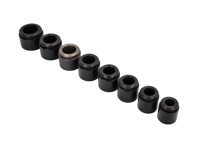
Price is for each Piston
*** Please check the piston diameter you need as some calipers take two different sizes. Sizes shown are the piston outer diameter (OD), The height of the pistons is 32mm
Related reference numbers
Related, superseded, cross reference or alternative numbers for comparison.
1055955
The product you are viewing cross references to these numbers
 Shop Securely
Shop Securely
 12 Month Warranty
12 Month Warranty
 Worldwide Delivery
Worldwide Delivery
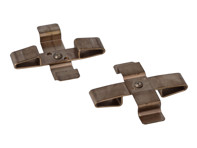

- Porsche 992.1 Carrera 2 3.0L 2019-24
- Porsche 992.1 Carrera 4 3.0L 2019-24
- Porsche 992.1 Carrera 2 Cabriolet 3.0L 2019-24
- Porsche 992.1 Carrera 4 Cabriolet 3.0L 2019-24
- Porsche 992.1 Carrera 2S / GTS 3.0L 2019-24
- Porsche 992.1 Carrera 4S / GTS 3.0L 2019-24
- Porsche 992.1 Carrera 2S / GTS Cabriolet 3.0L 2019-24
- Porsche 992.1 Carrera 4S / GTS Cabriolet 3.0L 2019-24
- Porsche 992.1 Targa 4 3.0L 2020-24
- Porsche 992.1 Targa 4S / GTS 3.0L 2020-24

Fits:
Porsche 992.1 Carrera 2019>> FRONT
cars with 17" brake disc, brake caliper red / black
For cars with: Sports equipment (option code: A8F)
Porsche 992.1 Carrera 2019>> FRONT
cars with 17" brake disc, brake caliper yellow
For cars with: Sports equipment (option code: A8F) / Comfort equipment (option code: A8C)
Click 'Zoom in' for large parts diagram.
Diagram ref no 11
Related reference numbers
Related, superseded, cross reference or alternative numbers for comparison.
9P1698995
The product you are viewing cross references to these numbers
 Shop Securely
Shop Securely
 12 Month Warranty
12 Month Warranty
 Worldwide Delivery
Worldwide Delivery
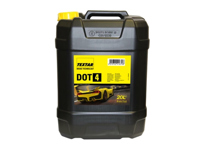

Brake fluid is one of the most important fluids in a car as without it, stopping the vehicle safely would be impossible. The Brake fluid transmits the force exerted by the driver on the brake pedal onto the wheel brake.
To ensure perfect operation of the brakes, the brake fluid must be changed regularly during inspection or maintenance and tested with the correct brake fluid tester.
Brake fluid should be changed every two years.
The higher the DOT class, the higher the boiling temperature and wet boiling point. Higher DOT classes tend to allow longer maintenance intervals. The DOT standards are based on the American FMVSS-116 standard of the Department of Transportation (DOT).
Boiling Point and Viscosity
Dry Boiling Point - describes the property of the sealed new brake fluid. In this state, the brake fluid is almost anhydrous (substance containing no water). The dry boiling point is usually between 240 and 280°C.
Wet Boiling Point - determines the property of the brake fluid at the end of its life cycle, at a water content of 3.5% the fluid should be replaced. This defined wet boiling point must not be undercut.
Viscosity - describes the flow rate of the brake fluid. The lower the viscosity, the faster the brake fluid flows through the brake system, and the faster the brake signals are transmitted.
Important Notes
• Brake fluid is poisonous and a hazardous waste.
• Be careful when changing. The fluid weakens paints and plastics.
• It must not come into contact with eyes or skin. Always rinse spilled liquid with water.
• Do not pour the liquid into drinking water or mix with used oil.
• The colour of the brake fluid reveals nothing about its quality.
• Brake fluid should be stored in its original packaging and in a dry, cool and well-ventilated place.
Find out about Textar product verification here
 Shop Securely
Shop Securely
 12 Month Warranty
12 Month Warranty
 Worldwide Delivery
Worldwide Delivery


DOT 4
Having an extremely high boiling point and lower viscosity than required, it meets and greatly exceeds regulatory standards. Also suitable for vehicles with ABS.
Vapour Lock formation
This sort of habit leaves room for the Vapour Lock, the formation of vapour bubbles due to boiling of the brake fluid that replace the normal fluid and are compressed, thereby sending the brake pedal to its fill stoke (spongy pedal). The origin is incident in the porosity of the tubes that make up the braking circuit, which in time draw moisture into the fluid, drastically reducing the boiling point. The result is a reduced braking efficiency.
Brembo Premium Brake Fluid
Brembo Premium brake fluids have a higher boiling point that exceeds the standard, thus offering superior resistance to the Vapour Lock and ensuring braking efficiency even at low temperatures. With high anti-corrosion properties and resistance to oxidation, Brembo brake fluid also allows for long-term unaltered chemical/physical characteristics of the fluid in operating circuit; therefore, preserving its integrity.
Related reference numbers
Related, superseded, cross reference or alternative numbers for comparison.
L040
The product you are viewing cross references to these numbers
 Shop Securely
Shop Securely
 12 Month Warranty
12 Month Warranty
 Worldwide Delivery
Worldwide Delivery
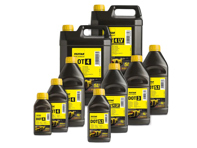
Brake fluid DOT 4 LV (Low Viscosity) Textar.

Textar DOT 4 LV (Low Viscosity) is especially recommended for use in hydraulic brake and clutch systems of vehicles fitted with ESP, ABS and ASR with a high boiling point and outstanding performance at very low temperatures.
DOT 4 LV (Low Viscosity)
Dry Boiling Point ≥ 260° C
Wet Boiling Point ≥ 165° C
Viscosity at -40C < 750 mm2 /s
Brake fluid is one of the most important fluids in a car as without it, stopping the vehicle safely would be impossible. The Brake fluid transmits the force exerted by the driver on the brake pedal onto the wheel brake.
To ensure perfect operation of the brakes, the brake fluid must be changed regularly during inspection or maintenance and tested with the correct brake fluid tester.
Brake fluid should be changed every two years.
The higher the DOT class, the higher the boiling temperature and wet boiling point. Higher DOT classes tend to allow longer maintenance intervals. The DOT standards are based on the American FMVSS-116 standard of the Department of Transportation (DOT).
Boiling Point and Viscosity
Dry Boiling Point - describes the property of the sealed new brake fluid. In this state, the brake fluid is almost anhydrous (substance containing no water). The dry boiling point is usually between 240 and 280°C.
Wet Boiling Point - determines the property of the brake fluid at the end of its life cycle, at a water content of 3.5% the fluid should be replaced. This defined wet boiling point must not be undercut. <
Viscosity - describes the flow rate of the brake fluid. The lower the viscosity, the faster the brake fluid flows through the brake system, and the faster the brake signals are transmitted.
Important Notes
• Brake fluid is poisonous and a hazardous waste.
• Be careful when changing. The fluid weakens paints and plastics.
• It must not come into contact with eyes or skin. Always rinse spilled liquid with water.
• Do not pour the liquid into drinking water or mix with used oil.
• The colour of the brake fluid reveals nothing about its quality.
• Brake fluid should be stored in its original packaging and in a dry, cool and well-ventilated place.
Find out about Textar product verification here
Related reference numbers
Related, superseded, cross reference or alternative numbers for comparison.
95006
The product you are viewing cross references to these numbers
 Shop Securely
Shop Securely
 12 Month Warranty
12 Month Warranty
 Worldwide Delivery
Worldwide Delivery


Brake fluid is one of the most important fluids in a car as without it, stopping the vehicle safely would be impossible. The Brake fluid transmits the force exerted by the driver on the brake pedal onto the wheel brake.
To ensure perfect operation of the brakes, the brake fluid must be changed regularly during inspection or maintenance and tested with the correct brake fluid tester.
Brake fluid should be changed every two years.
The higher the DOT class, the higher the boiling temperature and wet boiling point. Higher DOT classes tend to allow longer maintenance intervals. The DOT standards are based on the American FMVSS-116 standard of the Department of Transportation (DOT).
Boiling Point and Viscosity
Dry Boiling Point - describes the property of the sealed new brake fluid. In this state, the brake fluid is almost anhydrous (substance containing no water). The dry boiling point is usually between 240 and 280°C.
Wet Boiling Point - determines the property of the brake fluid at the end of its life cycle, at a water content of 3.5% the fluid should be replaced. This defined wet boiling point must not be undercut.
Viscosity - describes the flow rate of the brake fluid. The lower the viscosity, the faster the brake fluid flows through the brake system, and the faster the brake signals are transmitted.
Important Notes
• Brake fluid is poisonous and a hazardous waste.
• Be careful when changing. The fluid weakens paints and plastics.
• It must not come into contact with eyes or skin. Always rinse spilled liquid with water.
• Do not pour the liquid into drinking water or mix with used oil.
• The colour of the brake fluid reveals nothing about its quality.
• Brake fluid should be stored in its original packaging and in a dry, cool and well-ventilated place.
Find out about Textar product verification here
Related reference numbers
Related, superseded, cross reference or alternative numbers for comparison.
95002
The product you are viewing cross references to these numbers
 Shop Securely
Shop Securely
 12 Month Warranty
12 Month Warranty
 Worldwide Delivery
Worldwide Delivery
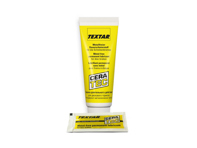

For brake systems and is highly temperature-resistant (up to 1,000°C).
Available in 75ml tube and 5ml sachet
The advantages of Cera Tec:
• Non-conductive and contains no solids
• Suitable for ABS
• Facilitates brake installation
• Reduces brake squealing
• Protects against scoring and corrosion
• Free of copper and acids
• Pressure-resistant / high viscosity
Cera Tec is also suitable for lubricating:• Disc- and drum-brake systems
• Compressors
• Centralised lubrication systems
• Axle bearings
• Chains
• Seat rails
• Sunroof tracks
• Battery terminals
Application:
Apply a thin layer of Cera Tec on the marked sections
Find out about Textar product verification here
 Shop Securely
Shop Securely
 12 Month Warranty
12 Month Warranty
 Worldwide Delivery
Worldwide Delivery
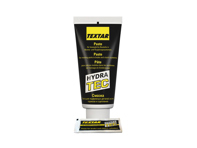
Hydra tec lubricant for maintenance work and protection Textar
Available in 75ml Tube or 5ml Sachet
The Advantages of Hydra Tec:
- Facilitates the installation of hydraulic brake components
- Tested compatibility with commercially available braking fluids (DOT3, DOT4, DOT4LV, DOT5.1)
- Free of mineral oils and compatible with EPDM rubber
- In addition, running surfaces are protected against corrosion
Hydra Tec is suitable for lubricating:
- Cylinder running surfaces
- Pistons
- Sealing elements
Application:
Apply a thin layer of Hydra Tec on the marked sections.
Note:
Hydra Tec should be applied thinly and evenly.
Never use mineral oils or greases as substitutes.
Do not apply the product on friction surfaces of brake pads or brake discs.
Find out about Textar product verification here
 Shop Securely
Shop Securely
 12 Month Warranty
12 Month Warranty
 Worldwide Delivery
Worldwide Delivery
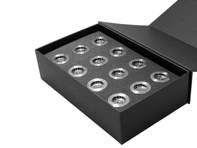
- Porsche 992.1 GT3 RS 4.0L 2022-24
Sold as a set for 2 calipers for PCCB and steel brake discs
Fits:
Porsche 992.1 GT3 RS - 2021 to 2024
Don't compromise on safety or performance – choose our titanium pucks for enhanced braking reliability and a smoother, more responsive driving experience on and off the track. Our pucks will ensure that your braking system can handle even the most demanding race conditions, giving you the confidence to push your Porsche to the limit.
The Problem
Many owners, drivers and enthusiasts of the Porsche GT3 RS, who visit race tracks with this model in 80% of cases, are facing issues with the braking system.
Whether the brakes are equipped with factory steel or PCCB calipers, ceramic pucks are mounted on the pistons as a thermal barrier, preventing excessive heat transfer from the pads to the pistons and fluid. These pucks help reduce heat buildup, but due to the extreme temperatures and repeated heat cycles from aggressive or prolonged braking on the track, the ceramic pucks can become brittle and break down. Initial signs of this failure include cracking or chipping.
Missing or damaged ceramic pucks can lead to diminished braking performance and increased heat transfer to the fluid. If a significant number of pucks fail, it could result in serious and dangerous braking issues.
This issue is frequently overlooked during brake pad replacements, as technicians are typically unaware of it and fail to inspect for it.
The Solution
Gold Leaf pucks are made of annealed aerospace titanium Ti-6Al-4V (Grade 5). They offer similar thermal properties to ceramic pucks but are much more durable under repeated heat cycles. While they are costly, they effectively maintain a thermal barrier, unlike stainless steel, which allows heat to transfer to the fluid.
Key Benefits
Lower weight: Titanium is lighter than ceramic, which can reduce the overall weight of the braking system. This results in quicker response times for acceleration, braking, and direction changes, especially noticeable on the track.
Higher strength: Titanium is stronger and more wear-resistant, meaning it can withstand higher temperatures and greater forces without deforming. This is particularly beneficial on the track, where braking temperatures can reach extreme levels.
Installation
Installing of the Gold Leaf Piston Pucks:
1. Remove the wheels.
2. Unplug the brake lines and remove the calipers.
3. Remove brake pistons from the calipers.
4. Unscrew the original ceramic pucks and screw in the new titanium pucks. Be careful regarding the piston surface. We recommend using Loctite on the screw threads.
5. Insert brake pistons back in their caliper sleeves.
6. Install the calipers and brake lines, bleed the calipers with new braking fluid and install the wheels.
Related reference numbers
Related, superseded, cross reference or alternative numbers for comparison.
9GT61512
The product you are viewing cross references to these numbers
 Shop Securely
Shop Securely
 12 Month Warranty
12 Month Warranty
 Worldwide Delivery
Worldwide Delivery
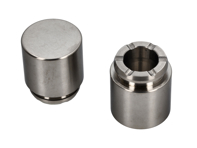

Titanium is a very poor conductor of heat, and reduces the heat transfer by approximately 90%
The standard aluminum brake pistons are light but very heat conductive which means the thermal energy from the brake pad transfers easily to the brake fluid.
The castellated contact edge promotes airflow into the piston cavity and reduces the contact surface with the pad and thus further decreases heat transfer to the brake fluid.
We designed using advanced engineering simulations (FEA) to achieve the same weight than their aluminum counterparts while maintaining superior structural strength.
As opposed to stainless steel pistons, our titanium alloy pieces weigh the same as the original aluminum pistons; and they will never corrode and damage the seals causing the caliper to leak.
Price is per pair of pistons
**Please check the piston diameter you need as some calipers take two different sizes. Sizes shown are the piston outer diameter (OD)
Related reference numbers
Related, superseded, cross reference or alternative numbers for comparison.
SL-BKP-
The product you are viewing cross references to these numbers
 Shop Securely
Shop Securely
 12 Month Warranty
12 Month Warranty
 Worldwide Delivery
Worldwide Delivery
Porsche Caliper Seals & Pistons | Design911 Precision Hydraulic Components for Restoring Braking Power & Reliability
Caliper seals and pistons are vital hydraulic components in your Porsche’s braking system, ensuring smooth, consistent, and powerful brake performance. The piston transfers hydraulic pressure to the brake pads, while the seals maintain fluid integrity, preventing leaks and contamination. Over time, wear, heat, and moisture can compromise these parts — reducing braking efficiency and safety. Replacing caliper seals and pistons is essential for maintaining consistent pressure, pedal feel, and reliability.
At Design911, we offer a comprehensive range of caliper seals and pistons, engineered for precision fitment and durability. Each component is crafted from high-grade materials designed to resist corrosion, heat, and hydraulic fluid degradation. Perfect for servicing, performance upgrades, or complete caliper restoration, these components restore your Porsche’s braking response and ensure long-term dependability.
What Do Caliper Seals & Pistons Do?
These two components work together to create and maintain the hydraulic pressure that powers your Porsche’s braking system.
Core Functions:
• Pistons convert hydraulic pressure into clamping force against the brake
pads.
• Seals prevent brake fluid leakage and maintain system pressure.
• Ensure smooth piston retraction for consistent pad contact.
• Protect against contaminants, moisture, and corrosion.
• Maintain balanced braking and pedal feel across all wheels.
High-quality seals and pistons ensure your Porsche delivers the stopping power, responsiveness, and control expected of its engineering pedigree.
Why Do Caliper Seals & Pistons Fail or Degrade?
Due to their exposure to heat, pressure, and environmental factors, these parts naturally deteriorate over time — especially in performance or high-mileage vehicles.
Common Causes of Failure Include:
• Seal wear or cracking from age and fluid degradation.
• Corrosion or pitting on pistons caused by moisture ingress.
• Brake fluid contamination leading to swelling or hardening.
• Heat damage from aggressive braking or track use.
• Improper installation or infrequent brake servicing.
When seals or pistons fail, symptoms such as fluid leaks, uneven braking, or sticking calipers can occur — compromising braking safety and performance.
Why Replace or Upgrade Your Porsche Caliper Seals & Pistons?
Replacing these components restores full hydraulic integrity and smooth brake operation. Design911’s premium-grade seals and pistons are designed for longevity, precision, and compatibility across Porsche models — ensuring reliability under road or track conditions.
Key Benefits:
• Restores consistent braking pressure and pedal feel.
• Prevents leaks and contamination in the hydraulic system.
• Improves caliper response and even brake pad wear.
• Manufactured from corrosion- and heat-resistant materials.
• Direct-fit design for fast, accurate installation.
• Ideal for restorations, rebuilds, or performance upgrades.
Design911’s Porsche caliper seals and pistons deliver unmatched performance and durability, helping your Porsche maintain the sharp braking response it was built for.
Highlights
• High-quality Porsche caliper seals and pistons for all
models.
• Precision-engineered for hydraulic efficiency and longevity.
• Resistant to corrosion, high heat, and fluid degradation.
• Essential for brake caliper rebuilds or restorations.
• Improves pedal feel and braking consistency.
• Perfect for classic and modern Porsche vehicles.







